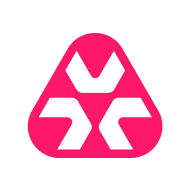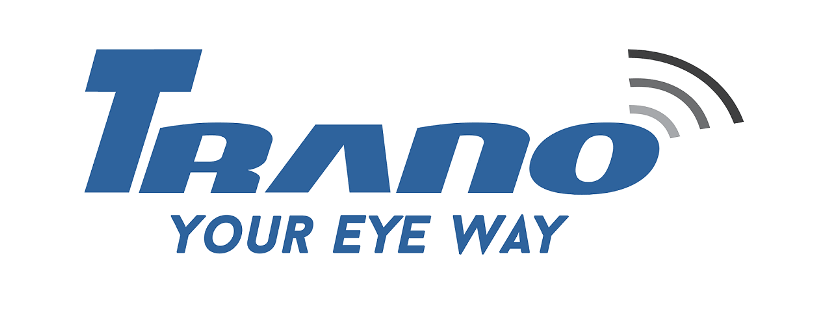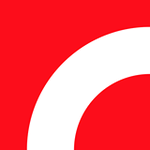Description

Atera

Tragging Fixed Assets
Comprehensive Overview: Atera vs Tragging Fixed Assets
Atera
a) Primary Functions and Target Markets:
- Primary Functions: Atera is an all-in-one IT management platform that offers remote monitoring and management (RMM), professional services automation (PSA), and remote access capabilities. The software provides tools for patch management, network discovery, IT automation, ticketing, reporting, and more.
- Target Markets: Atera primarily targets small to mid-sized managed service providers (MSPs) and IT departments. These organizations seek a comprehensive platform that can handle multiple IT management tasks within a single interface.
b) Market Share and User Base:
- Market Share: While exact market share figures may vary, Atera is considered a prominent player among RMM and PSA tools targeting smaller IT operations and MSPs. Its budget-friendly pricing model (usually per technician rather than per device) makes it appealing in its niche.
- User Base: Atera's user base primarily consists of small and mid-sized businesses that require efficient tools for remote monitoring and management at an affordable cost. It is a preferred choice for companies looking to streamline their IT operations without significant investment.
c) Key Differentiating Factors:
- Pricing Model: Atera offers a unique pricing strategy by charging per technician instead of per device. This model can result in significant cost savings for SMEs managing multiple devices.
- Ease of Use: Known for its user-friendly interface and easy setup process, Atera provides a solution that requires minimal onboarding time, making it attractive to businesses with limited IT resources.
- Integration and Automation: Atera offers robust integration with various third-party applications and APIs, allowing businesses to automate repetitive tasks and workflows effectively. This feature reduces manual efforts and boosts productivity.
Tragging Fixed Assets
a) Primary Functions and Target Markets:
- Primary Functions: Tragging Fixed Assets is an asset management solution that specializes in tracking and managing fixed and IT assets. The solution encompasses features for asset tracking, maintenance scheduling, RFID tagging, reporting, and auditing.
- Target Markets: Tragging targets organizations across various industries, including healthcare, education, manufacturing, and government sectors, that require comprehensive asset management capabilities. It particularly helps organizations with a large number of physical assets needing accurate tracking and maintenance.
b) Market Share and User Base:
- Market Share: Tragging Fixed Assets holds a strong position in niche markets focused on asset management, particularly where RFID technology and accurate lifecycle management are vital.
- User Base: Its user base typically comprises enterprises with significant investments in physical assets, seeking solutions to reduce asset-related losses and optimize maintenance cycles.
c) Key Differentiating Factors:
- RFID Integration: One of Tragging's standout features is its use of RFID technology for efficient and accurate asset tracking. This technology enables quick scanning and reduces the time and errors associated with manual inventory processes.
- Industry-Specific Customization: Tragging offers industry-specific solutions and customization options, making it an adaptable tool across various sectors with specialized asset tracking needs.
- Comprehensive Reporting and Compliance: The platform delivers advanced reporting features and compliance tools, ensuring organizations can easily audit and manage their asset portfolios.
Comparative Summary
While both Atera and Tragging Fixed Assets provide management solutions, they cater to different aspects of business operations—IT service management versus physical asset management. Atera is distinguished by its affordability and comprehensiveness for IT management needs, especially suited for MSPs, whereas Tragging excels in asset-heavy sectors requiring precise tracking and maintenance. Their user base similarly reflects these operational focuses, with Atera serving more IT-centric firms and Tragging supporting industries with substantial physical asset investments.
Contact Info

Year founded :
2011
Not Available
Not Available
Israel
http://www.linkedin.com/company/atera-id

Year founded :
Not Available
Not Available
Not Available
Not Available
Not Available
Feature Similarity Breakdown: Atera, Tragging Fixed Assets
When comparing Atera and Tragging Fixed Assets in terms of their features, it's important to note that these products serve different primary purposes, but there may still be some areas of overlap. Let’s break down the features and aspects you’re interested in:
a) Core Features in Common
Atera is primarily an IT management and remote monitoring and management (RMM) solution, while Tragging Fixed Assets is focused on asset management, particularly tracking physical assets. However, they can share some functionalities:
-
Asset Management:
- Both platforms offer asset management capabilities, though they are used in different contexts (IT assets vs physical assets).
-
Reporting and Analytics:
- Both solutions provide reporting tools to help managers make data-driven decisions. These reports might include asset performance, usage, or inventory.
-
User Management:
- Each platform allows for user management to varying extents, enabling administrators to set permissions, roles, and access levels.
b) User Interfaces Comparison
-
Atera:
- Offers a dashboard-focused interface tailored for IT professionals. The UI generally emphasizes ease of use with intuitive navigation designed to help IT teams quickly access remote support tools, monitor network health, and manage tickets.
- It's designed for efficiency in handling multiple client networks, integrating various systems for streamlined IT management.
-
Tragging Fixed Assets:
- Typically features an interface geared towards logistics and asset tracking. It might include map views for tracking physical asset locations, reports on asset conditions, and modules for checking asset histories.
- The interface focuses more on tracking physical items and may include barcode or RFID integration capabilities for easier asset identification and management.
c) Unique Features
-
Unique to Atera:
- Remote Monitoring & Management (RMM): Atera excels in providing tools that allow IT professionals to monitor multiple client networks, perform remote troubleshooting, and maintain IT infrastructures.
- Patch Management & Automation: Automating updates and applying patches across IT systems is a key feature, thus enhancing security and efficiency for managed networks.
-
Unique to Tragging Fixed Assets:
- Physical Asset Tracking with RFID/Barcode: This feature is particularly unique as it focuses on the physical tracking of assets using technologies such as RFID and barcodes.
- Maintenance Scheduling and Tracking: Provides specific tools for scheduling and tracking asset maintenance, ensuring that equipment remains functional and sustainable over time.
Overall, while Atera and Tragging Fixed Assets share some overlapping features in asset management and reporting, they are tailored for different types of assets and use cases, with unique strengths aligned to their specific purposes.
Features

Remote Monitoring & Management
Helpdesk & Ticketing
IT Automation
Reporting & Analytics
Network Discovery

Maintenance and Compliance
Financial Management
Reporting and Analytics
Asset Inventory Management
Best Fit Use Cases: Atera, Tragging Fixed Assets
Atera and Tragging Fixed Assets are two different software solutions that cater to distinct business needs. Here's a breakdown of their best fit use cases:
Atera
a) Best Fit for Businesses or Projects:
-
Managed Service Providers (MSPs): Atera is specifically designed for MSPs, allowing them to remotely manage their clients' IT infrastructure efficiently. It offers a combination of remote monitoring, management, ticketing, and automation tools which enable MSPs to deliver IT services efficiently.
-
IT Departments of Small to Medium-Sized Businesses (SMBs): Atera is also suitable for IT departments within SMBs that need comprehensive monitoring and management tools without the complexity of large-scale IT enterprise solutions.
-
Remote IT Support: Businesses that require remote IT support can leverage Atera’s remote access features to quickly address technical issues.
-
Startups with Limited IT Personnel: Startups and small businesses with limited IT staff can use Atera’s automation features to streamline their IT operations and minimize manual interventions.
d) Industry Verticals and Company Sizes:
- IT and Technology: Atera caters primarily to IT service providers, offering tools to improve efficiency and service delivery.
- Healthcare, Finance, and Education: Industries where IT management is critical for compliance and operational efficiency can benefit from Atera’s robust monitoring and remote management capabilities.
- SMBs to Mid-sized Enterprises: While Atera is scalable, it is best suited for SMBs and mid-sized enterprises seeking robust IT management without the need for extensive customization.
Tragging Fixed Assets
b) Preferred Scenarios for Use:
-
Asset-Intensive Industries: Companies that manage a large volume of physical assets can benefit from asset tracking tools provided by Tragging Fixed Assets.
-
Manufacturing, Construction, and Logistics: Industries with significant investments in machinery, equipment, and inventory will find Tragging invaluable for tracking asset location, usage, and maintenance history.
-
Government and Public Sector: Agencies that need to track and manage public property and equipment to ensure accountability and prevent loss.
-
Organizations with Regulatory Compliance Needs: Companies in industries where asset tracking and management are tied to compliance, such as healthcare or finance, can leverage Tragging to maintain accurate records.
d) Industry Verticals and Company Sizes:
- Large-Scale Enterprises and Corporations: While suitable for various company sizes, Tragging often caters to larger organizations with extensive physical assets.
- Industry-Specific Solutions: It offers tailored solutions for specific industries like manufacturing, healthcare, and logistics, where precise asset tracking is critical for operational success.
- Public Sector and Governmental Organizations: These entities often require meticulous asset management to fulfill regulatory and operational demands.
In summary, Atera is best suited for IT service providers and SMBs needing comprehensive IT management tools, while Tragging Fixed Assets is ideal for asset-intensive industries that require robust asset management and tracking systems. Each product addresses different aspects of business operations, catering to specific industry needs and company sizes.
Pricing

Pricing Not Available

Pricing Not Available
Metrics History
Metrics History
Comparing undefined across companies
Conclusion & Final Verdict: Atera vs Tragging Fixed Assets
To provide a conclusion and final verdict on Atera and Tragging Fixed Assets, let's break down the evaluation based on the given criteria:
a) Best Overall Value
Considering all factors, Atera generally offers the best overall value, particularly for businesses focused on remote management, IT support, and managed service provider (MSP) solutions. This is because Atera is an all-in-one platform that integrates remote monitoring, ticketing, reporting, and patch management, designed to streamline IT operations. Its pricing model, which is often based on a per-technician basis rather than per-device, can offer cost advantages and scalability for growing IT teams.
In contrast, Tragging Fixed Assets specializes in asset management with a focus on tracking tangible assets such as equipment, machinery, and inventory. While it is highly effective for organizations needing robust inventory and asset tracking, especially in industries like manufacturing and logistics, its tools are more niche and specific than Atera’s broad IT service management capabilities.
b) Pros and Cons
Atera:
- Pros:
- Comprehensive IT service management tools (e.g., remote access, patch management, ticketing).
- Intuitive interface with easy setup and deployment.
- Cost-effective pricing model for MSPs and IT departments.
- Cons:
- Focused on IT services, not ideal for businesses looking for specific physical asset management solutions.
- May have a learning curve for non-technical users or those new to MSP tools.
Tragging Fixed Assets:
- Pros:
- Specialized in physical asset tracking, offering robust solutions for inventory management.
- Tailored features for asset-heavy industries, providing detailed reporting and compliance management.
- Cons:
- Limited to physical asset management, not suitable for IT service management.
- May require integration with other systems for a comprehensive business management solution.
c) Recommendations for Users
For users trying to decide between Atera and Tragging Fixed Assets, the decision should be based on their core needs:
-
Choose Atera if your primary need is IT service management. It’s best suited for IT departments and managed service providers looking for a comprehensive tool to manage remote systems, handle IT tickets, and streamline their IT operations.
-
Choose Tragging Fixed Assets if your business requires detailed tracking and management of physical assets. It is ideal for sectors where maintaining an up-to-date record of equipment, inventory, and physical assets is critical for operational efficiency and compliance.
Ultimately, evaluating the specific requirements of your organization, the industry you operate within, and long-term strategic objectives will guide you in selecting the tool that offers the most value. For hybrid needs, integrating additional software solutions alongside Atera or Tragging Fixed Assets might be necessary to cover both IT management and asset tracking comprehensively.
Add to compare
Add similar companies



